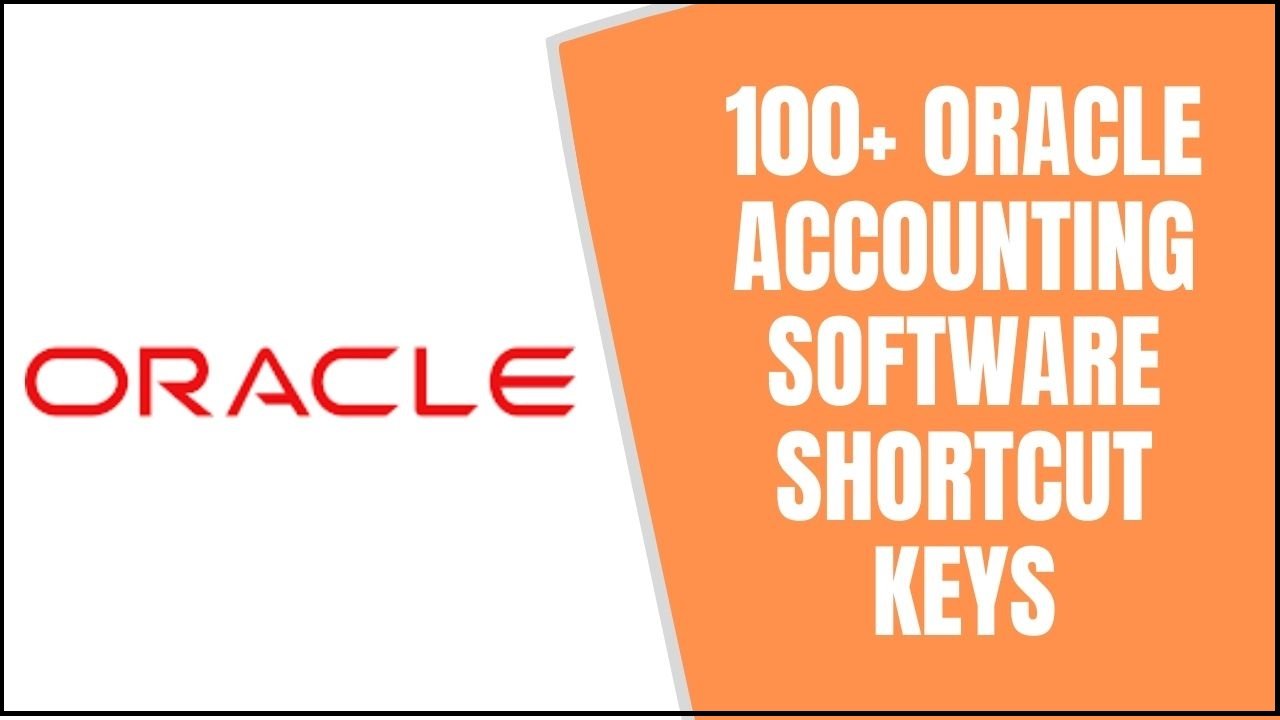1 What is the reputation of Oracle?
Oracle is a software and services corporation best known for its Java-based products and services. Oracle delivers cloud-engineering services and systems, as well as database management systems, through its four main business segments: cloud and license, hardware, and services.
2 Oracle was created by whom?
Oracle’s headquarters are located in Redwood Shores, California. Larry Ellison and Bob Miner, computer programmers at the American electronics business Ampex Corporation, along with Ed Oates, Ellison’s supervisor at Ampex, created Software Development Laboratories in 1977.
3 What is the Oracle concept?
An object-relational database management system is a relational database management system that includes object-oriented characteristics such as user-defined types, inheritance, and polymorphism (ORDBMS).
4 What is the origin of the name Oracle?
Oracle. Larry Ellison and Bob Oats were working for the Central Intelligence Agency on a consulting project (CIA). Oracle was the code name for the project (the CIA saw this as the system to give answers to all questions or something like that).
5 Oracle’s products
Applications from Oracle Database Oracle Fusion Middleware Servers with Oracle Cloud Enterprise Manager Storage Workstations (Complete List)
6 Who are Oracle’s most important clients?
The United States is the largest segment of Oracle Cloud ERP clients, followed by the United Kingdom. The chart includes a single Y-axis that shows the number of customers. The numbers range from 3.2 to 44.6.
7 Which Oracle version is the most recent?
19c Oracle Database: The latest long-term release is Oracle Database 19c, which offers the highest level of release stability and the longest timeframe for support and bug patches. Oracle Database 21c, which is also ready for production usage as an innovation release today, gives you a sneak peek at the numerous new features and upgrades.
Oracle continued to create new Internet-based technology throughout the year 2000. The company debuted its E-Business Suite in May. “Instead of offering individual packages for sales force automation, accounting, employee benefits, and so on,” writes Forbes reporter Elizabeth Corcoran, “Oracle connects together 70’modules’ in a package and pumps them up with Internet technology.” The Oracle 9i software database management system, which was also released that year, had an application server that allowed users to run e-commerce applications linked to their databases. Oracle managed to beat many of its competitors until the end of 2000 thanks to this innovative technology, yet the technology sector’s slowdown finally caught up with the company in March 2001, when it stated that database software and application server sales were sluggish.
In this article we will learn the Shortcut keys of the famous accounting software Oracle, we have provided you the most useful shortcut keys that require while working on Oracle Accounting Software, and also help you to perform a specific task much faster than that of the mouse. and you can download these shortcut keys in PDF and Excel files for future reference.
Oracle Accounting Software Shortcut Keys
Common Oracle Shortcut Keys
| F1 | Show help for the selected item |
| Ctrl−Space | Code completion: show parameters of the current method |
| Alt−Enter | Code completion: accept automatic code completion suggestion |
| Alt−F12 | Open Java class search dialog |
| Ctrl−Shift−F | Open Find in Files dialog |
| F12 | Go to the declaration of the current Java class or method |
| Ctrl−F5 | Start a current document with debugging |
| Ctrl−F10 | Start current document without debugging |
| Ctrl−Shift−S | Start WebLogic Server |
| Ctrl−Shift−T | Stop Weblogic Server |
General Oracle Shortcut Keys
| F1 | Show help for the selected item |
| Ctrl−N | New file |
| Ctrl−O | Open file |
| Ctrl−F4 | Close file |
| Ctrl−S | Save all files |
| Ctrl−Shift−A | Save all files |
| Ctrl−Z | Undo |
| Ctrl−Y | Redo |
| Ctrl−Shift−Z | Redo |
| Alt−Shift−Backspace | Redo |
| Ctrl−C | Copy |
| Ctrl−Insert | Copy |
| Shift−Delete | Cut |
| Ctrl−X | Cut |
| Shift−Insert | Paste |
| Ctrl−V | Paste |
| Ctrl−Tab | Toggle through open documents |
| Ctrl−Shift−Tab | Toggle through open documents backward |
| Ctrl−L | Open local symbols search dialog |
| Alt−F12 | Open Java class search dialog |
| Ctrl−Shift−F | Open Find in Files dialog |
| F7 | Build application |
| Alt−Arrow Right | Show next view tab (Design View, Source View, etc.) |
| Alt−Arrow Left | Show previous view tab (Design View, Source View, etc.) |
| Alt−, | Show previous open document |
| Ctrl−Alt−Arrow Left | Show previous open document |
| Alt−. | Show next open document |
| Ctrl−Alt−Arrow Right | Show next open document |
| Shift−F12 | Shift focus to Application tab |
| Ctrl−F12 | Shift focus to Files tab |
| Alt−Enter | Show Properties Editor, Toggle through individual properties |
| Ctrl−Shift−N | Next item on the Output tab |
| Ctrl−Shift−P | The previous item on the Output tab |
| Delete | Delete |
| Ctrl−D | Delete |
| Ctrl−P |
Source View Oracle Shortcut Keys
Note: adding Shift to many of the cursor movement keyboard shortcuts adds text selection.
| Alt−Enter | Code completion: accept automatic code completion suggestion |
| Ctrl−Space | Code completion: show parameters of the current method |
| Ctrl−F | Show find dialog |
| Ctrl−R | Show replace dialog |
| Ctrl−H | Show replace dialog |
| Ctrl−G | Show go to line number dialog |
| Tab | Indent selected text |
| Shift−Tab | Unindent selected text |
| F3 | Find next |
| Shift−F3 | Find previous |
| Ctrl−F3 | Go to the next occurrence of selected text |
| Ctrl−Shift−F3 | Go to the previous occurrence of selected text |
| Ctrl−Numpad + | Expand collapsed lines |
| Ctrl−Numpad − | Collapse expanded lines |
| F12 | Go to the declaration of the current Java class or method |
| Ctrl−Alt−Down | Go to the next Java member |
Arrow Oracle Shortcut Keys
| Ctrl−Alt−Up | Go to previous Java member |
| Escape | Close current dialog |
| Ctrl−A | Select all |
| F2 | Bookmark: go to next |
| Shift−F2 | Bookmark: go to previous |
| Ctrl−F2 | Bookmark: toggle |
| Ctrl−[ | Move cursor to matching brace |
| Ctrl−] | Move cursor to matching brace |
| Ctrl−Home | Move cursor to the beginning of the file |
| Ctrl−End | Move cursor to the end of the file |
| Ctrl−Arrow Right | Move to the next word |
| Ctrl−Arrow Left | Move to the previous word |
| Ctrl−Arrow Up | Scroll up without changing cursor position |
| Ctrl−Arrow Down | Scroll down without changing cursor position |
Debugging Oracle Shortcut Keys
| Alt−F9 | Create breakpoint |
| Ctrl−F9 | Clear all breakpoints |
| Ctrl−B | Enable all breakpoints |
| Ctrl−Shift−B | Disable all breakpoints |
| F9 | Toggle breakpoint |
| F11 | Step into |
| F10 | Step over |
| Shift−F11 | Step out |
| F5 | Continue |
| Alt−F5 | Pause |
| Shift−F5 | Stop |
| Shift−F10 | Run to cursor |
| Ctrl−F5 | Start current document with debugging |
| Ctrl−F10 | Start current document without debugging |
| Ctrl−Shift−, | Next stack frame |
| Ctrl−Shift−. | Previous stack frame |
| Ctrl−Alt−1 | Show Breakpoints tab |
| Ctrl−Alt−2 | Show Locals tab |
| Ctrl−Alt−3 | Show Watches tab |
| Ctrl−Alt−4 | Show Callstack tab |
| Ctrl−Alt−5 | Show Threads tab |
| Ctrl−Alt−6 | Show Immediates tab |
JSP Designer Oracle Shortcut Keys
| Ctrl−Shift−S | Toggle show scripts |
| Ctrl−Shift−O | Toggle show table borders |
| Source Control | |
| Ctrl−E | Open the current file for editing in Perforce (if Perforce is selected as your source control system) |
Setting Focus Oracle Shortcut Keys
| Alt−0 | Output tab |
| Alt−1 | Application tab |
| Shift−F12 | Application tab |
| Alt−2 | Files tab |
| Ctrl−F12 | Files tab |
| Alt−3 | Find tab |
| Alt−4 | Main work area |
| Alt−5 | Build tab |
| Alt−6 | Property Editor tab |
| Alt−7 | Document Structure tab |
| Alt−8 | Palette tab |
| Alt−9 | Data Palette tab |
| Ctrl−Alt−0 | Streams tab |
| Ctrl−Alt−1 | Breakpoints tab |
| Ctrl−Alt−2 | Locals tab |
| Ctrl−Alt−3 | Watches tab |
| Ctrl−Alt−4 | Callstack tab |
| Ctrl−Alt−5 | Threads tab |
| Ctrl−Alt−6 | Immediates tab |
Portal Oracle Shortcut Keys
| Ctrl−Shift−F10 | Brings up right−click menus in the Portal and Portlet Designers. |
Thank you for reading, If you liked this article, then definitely share it with your friends on social media, so that they too can get this information.










